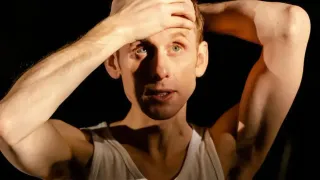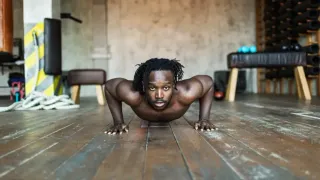
5 hours ago
Beyond the Mainstage: Alt Drag Competitions and Indie Queer Shows Are Redefining the Scene
READ TIME: 3 MIN.
Once upon a time, RuPaul’s Drag Race was the uncontested queen of the queer TV universe. But ask any drag performer or LGBTQ+ fan, and you’ll hear it: the shimmer of Drag Race is starting to fade. Maybe it’s the endless deluge of spin-offs, the formulaic challenges, or the creeping suspicion that corporate rainbow capitalism is outshining homegrown queer creativity. Whatever the reason, a “Drag Race fatigue” is here—and it’s sparking an electrifying renaissance in alternative drag and indie queer reality shows across the country .
But don’t call it a backlash. What’s happening now is a celebration: a reclaiming of drag for everyone, not just those who fit a reality TV mold. In club basements, art spaces, and campus centers from Hartford to Philly to Vancouver, alt drag competitions are pushing the boundaries of gender, performance, and what it means to be truly queer.
Step into Chez Est, Hartford’s legendary queer bar, and you’ll find a drag pageant unlike any other. Mx. Toxic isn’t about “America’s Next Drag Superstar”—it’s a freewheeling, defiantly inclusive competition where drag queens, kings, things, and everything in-between strut their stuff without apology .
This year, six competitors from Connecticut and Massachusetts unleashed their wildest selves in two rounds: a performance showing off their signature skills, and a runway look based on their deepest phobias. Forget sequins and sashes—Graveyard Brat, this year’s winner, took the stage in a tattered black veil, channeled horror film icons, and drenched herself in fake blood while lip-syncing Kendrick Lamar’s “Wacced Out Murals.” For her runway, she confronted her claustrophobia head-on, ripping a bag off her head in a symbolic act of queer liberation.
Psyclops, another standout, mixed vintage movie dialogue with riot grrrl anthems, drank “blood,” and walked the runway in a clown look festooned with crimson vials. The competition’s spirit? Pure, unfiltered queer joy—messy, gutsy, and gloriously weird.
As Glass Staine, the new producer and host, declared: “Mx. Toxic is about holding space for everyone who never saw themselves on TV. If you’ve ever been called ‘too much’ or ‘too strange’—this is your family” .
Meanwhile in Philadelphia, the “freaks and weirdos” are having their day at Morse Code—a raucous open-call competition hosted at Tattooed Mom. Here, drag is punk rock: contestants with names like The Human Discoball, Queen Elizabeth New Jersey, and Drag Ghoul compete for a $100 prize and a whole lot of respect. The vibe is democratic, the crowd is rowdy, and the rules are simple: be yourself, and don’t hold back .
Across the country in Vancouver, Mass Hysteria is raising the bar with its own take on alternative drag. The show, organized by Rogue Apostles Entertainment and hosted at UnderBar, features a rotating cast of local legends and fresh faces—and there’s never a cover charge. The emphasis? Community over competition, showcasing the beautiful chaos of queer performance art in all its forms .
These aren’t just shows—they’re lifelines for queer and trans folks who crave connection, representation, and a space where “different” is the highest compliment.
What makes these events so vital isn’t just the spectacle (though there’s plenty of that). It’s the way they embody the full spectrum of LGBTQ+ experience, honoring the drag roots of protest, play, and chosen family.
At Syracuse University’s Alternative Drag Showcase, headliner Sigourney Beaver (of Dragula fame) led a Halloween-season celebration of drag’s many faces. Local legends and newcomers alike took the stage, proving that drag can be political, poetic, or just plain weird—and that every expression is welcome .
Venues like Cantina 52’s “FreakShow” and Portland’s “WMC: A POC Halloween Showcase” are doing the same, prioritizing accessibility, intersectionality, and genuine queer artistry over the glitz of TV contracts or influencer fame .
For many performers, these spaces are about more than applause—it’s about being seen. As one Morse Code contestant put it: “I’m not here to be pretty or perfect. I’m here to be real. That’s what drag is for me: survival, and joy” .
So, is Drag Race over? Not by a long shot. But the monopoly is breaking. The new guard of drag—alt, indie, international, and gloriously unfiltered—is here to remind us that queer culture will always find a way to thrive, adapt, and make its own rules.
Whether you’re a die-hard Dragula fan, a king who’s never seen a workroom, or just a queerdo looking for your people, one thing’s for sure: the wig-sized void left by mainstream TV is being filled by something far more radical—and far more real.
Queer community has always been about finding family where you least expect it. Right now, you’ll find that family behind the velvet curtain at your local dive bar, in the glow of a makeshift spotlight, and on the lips of a drag thing screaming their truth into the night. The revolution, as always, is live and in technicolor.






